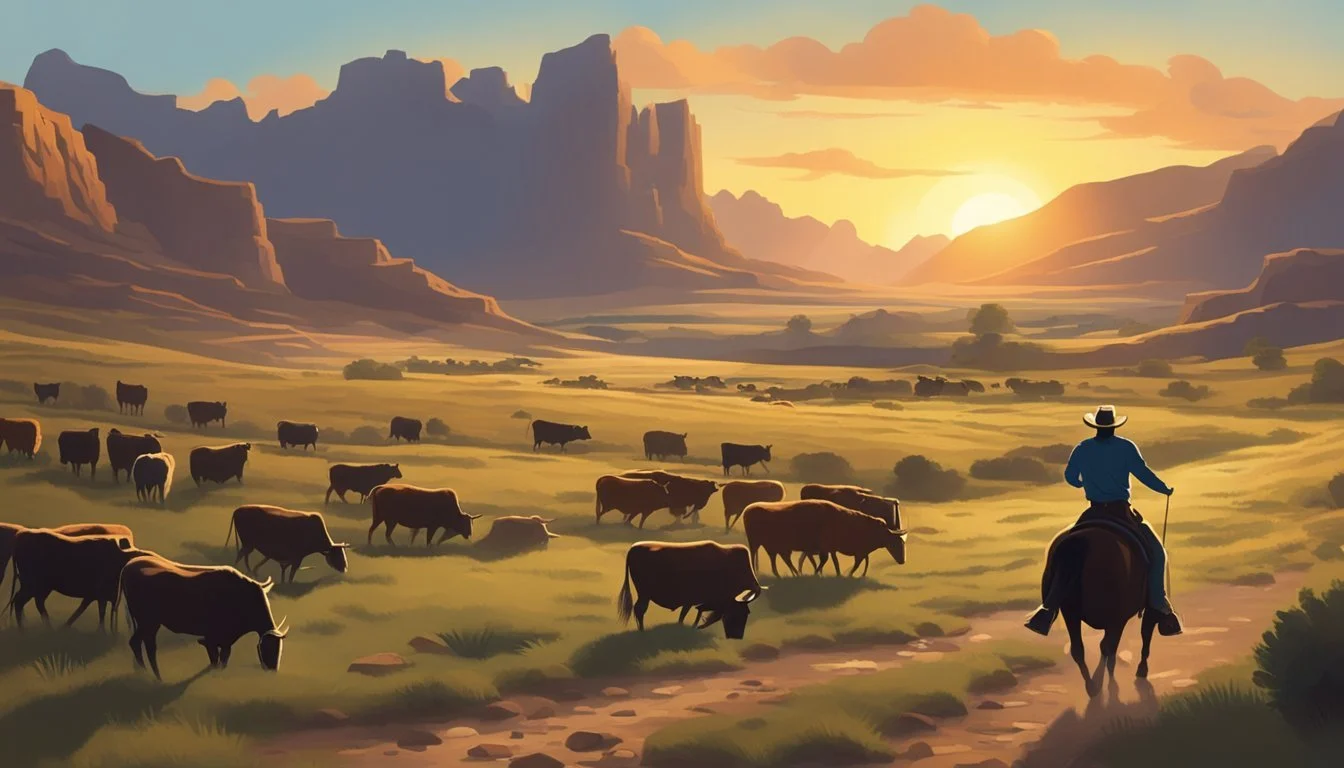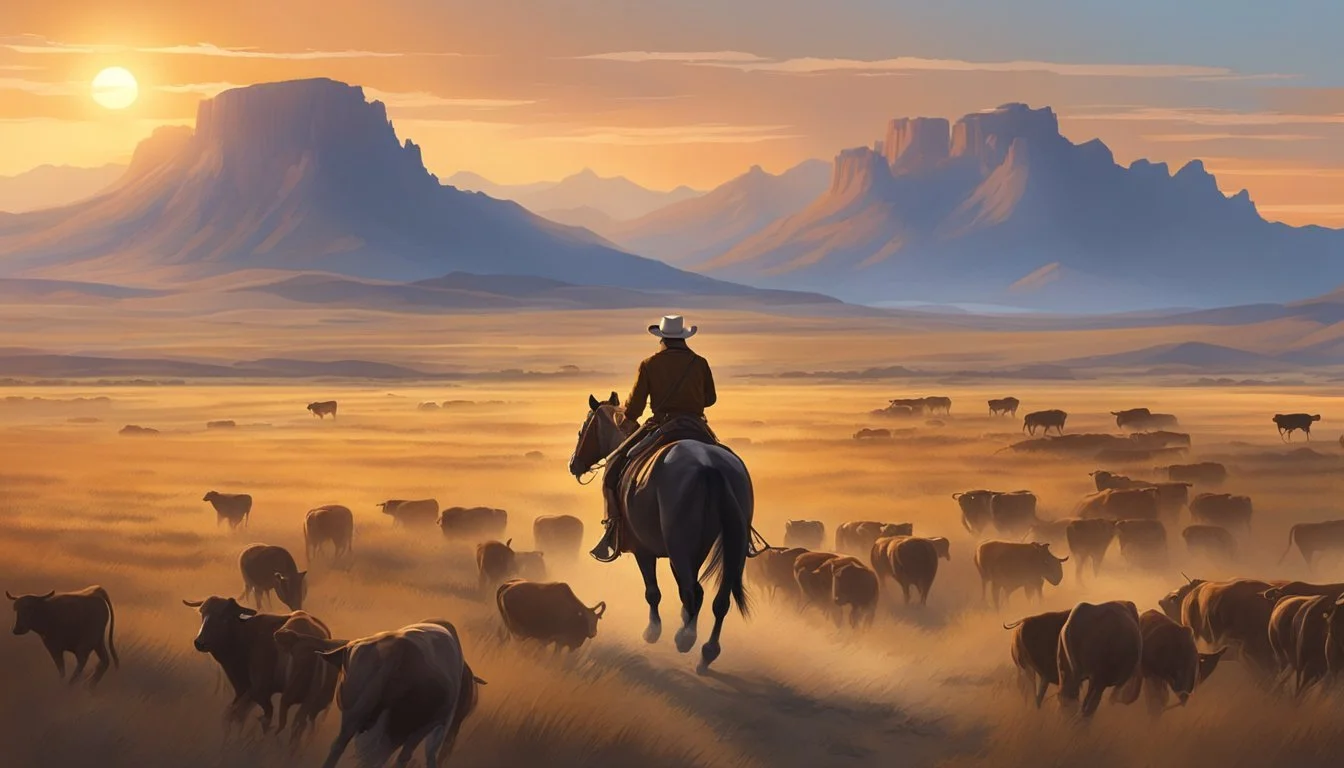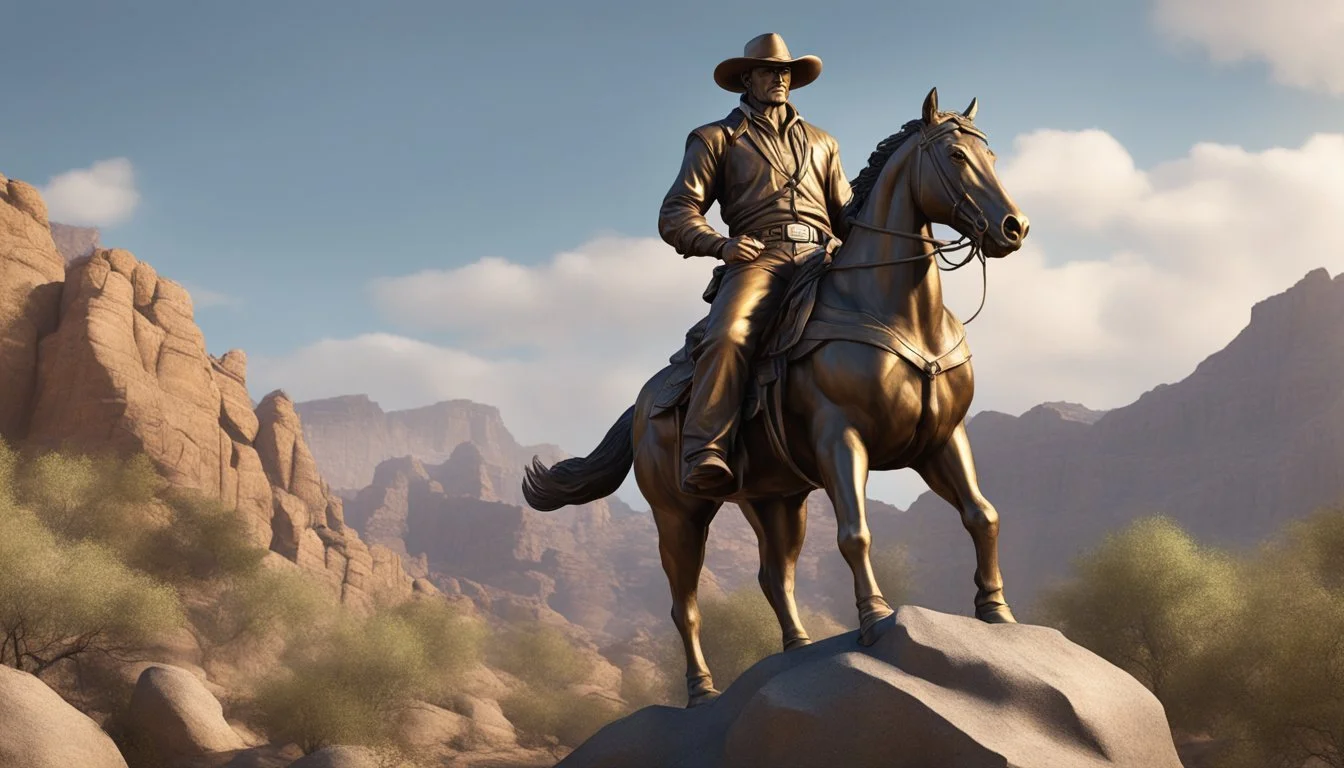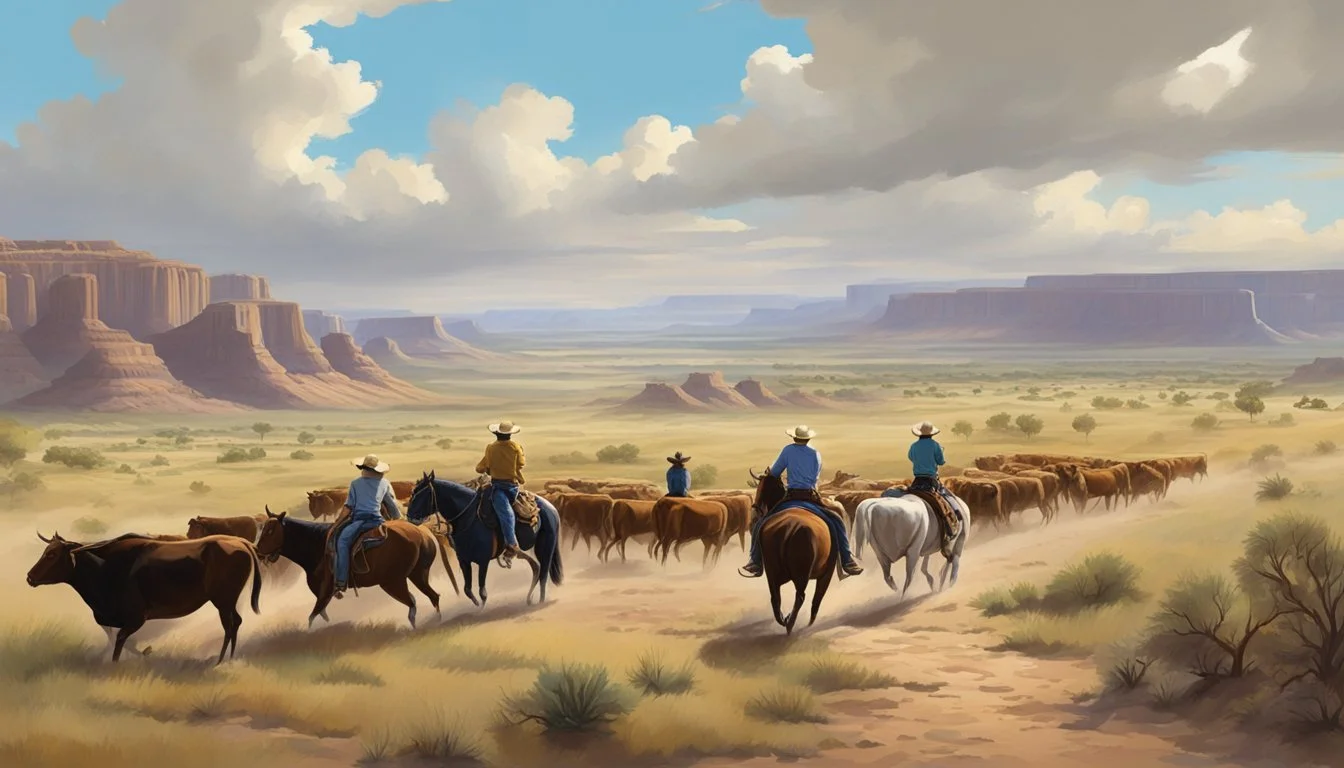The Texas Cowboy's Guide to Western Art and Sculpture
An Expert Overview
The landscape of Western art and sculpture is vivid and expansive, capturing the rugged beauty and enduring spirit of the American West. It is a genre deeply rooted in the portrayal of cowboy culture, reflective of a time when daily existence was intertwined with the wilderness. Western art provides a visual narrative of life on the frontier, from the desolate prairies to the bustling cattle towns, and embodies the essence of the cowboys who once roamed these realms, encapsulating their traditions, values, and stories within each piece.
Artists dedicated to Western themes often draw inspiration from the historical figures and iconic elements of the Old West. Artisans like Frederic Remington and Charles M. Russell set the standard with their paintings and sculptures that resonate with authenticity and attention to detail. Contemporary artists continue this legacy, melding classic techniques with modern perspectives to celebrate and preserve the cowboy's way of life. Through the brushstrokes and chisels of these artists, the myths and realities of the American West live on, offering audiences glimpses of a bygone era.
In Texas, this artistic tradition is honored within the walls of institutions such as The Museum of Western Art in Kerrville. Established in 1983, this museum stands as a testament to the genre, showcasing the works of those who have skillfully immortalized the cowboys and the landscapes they held dear. Through rotating collections and special exhibitions, the museum not only highlights historical works but also provides contemporary artists with a platform to contribute to the evolving story of Western art.
The Origins of the Cowboy: From Vaquero to American Icon
The cowboy figure, emblematic of American culture, originated from the Mexican vaquero tradition, transformed by historical events such as the Civil War and the cattle drive era, shaping the cowboy's rise as an American icon in the Western range.
Influence of Mexican Vaquero Culture
Mexican vaqueros are considered the predecessors of the American cowboys. Skilled in ranching and horsemanship, they developed the necessary techniques to manage cattle during the Spanish colonial period. These techniques included roping, riding, and livestock management, which were essential for operating the ranches established by Spaniards in the New World. Over time, these practices crossed into what would become the American West, introducing the foundation of cowboy culture.
The Rise of Cowboy Culture in the American West
Following the annexation of Texas and the American Southwest, elements of vaquero culture were assimilated into the burgeoning cowboy culture of the American frontier. The skills and knowledge of the vaqueros were indispensable in managing the expansive cattle ranches that spread across the range. English-speaking settlers adapted vaquero practices into what is now recognized as cowboy culture, which became a symbol of the rugged and expansive West.
Civil War and the Expansion of the Range
The Civil War had a profound impact on the American South and West, disrupting traditional agricultural practices and labor structures. After the war, there was a significant increase in demand for cattle in the northern states, leading to the era of the great cattle drives. Vaqueros and American cowboys drove massive herds of cattle across the range to railheads, which was crucial in the expansion and romanticism of the cowboy way of life, sealing the cowboy’s status as an icon of American resilience and freedom.
The Art of the West: Painting a Cowboy's Life
In capturing the essence of cowboy culture and the Western frontier, artists have played a pivotal role in immortalizing the myths, hard truths, and spirited lifestyle of the American cowboy in their work.
Western Art: An Emerging Genre
Western art emerged as a distinct genre focusing on themes related to the Western United States during the late 19th century. It depicts the life and environment of the American Cowboy, the landscapes, wildlife, and Native American culture. Western art is a branch of American art that is particularly concerned with interpreting the unique aspects of frontier life.
Prominent Artists: Russell and Remington
Two names stand out in the world of Western art: Charles M. Russell and Frederic Remington. Russell conveyed the cowboy’s lifestyle with authenticity, having been a cowboy himself. His deep understanding of the subject matter shone through in his vibrant works, often infused with both a sense of action and humanity. Remington’s focus on the ruggedness and romance of the Old West made him a household name. Frederic Remington, who also crafted sculptures, is famous for realistic and dramatic scenes that captured the tense and transitional energy of the West.
Depicting the Wild and Rugged Landscape
The landscapes featured in Western art are a testament to the untamed, wild beauty of the American West. Paintings often feature vast, open spaces with dramatic lighting and weather, reflecting the unyielding conditions cowboys faced. Depictions of fierce battles, serene sunsets, and untamed horses running free, highlight the juxtaposition of violence and beauty, danger, and freedom that defines the cowboy's connection to the rugged terrain he calls home.
Sculpture in Western Art: Form and Function
In the vibrant tapestry of western art, sculpture stands out for its enduring presence and cultural significance. This medium melds artistic excellence with a palpable sense of history.
The Art of Bronze Sculpting
Bronze sculpting in western art is a testament to skilled craftsmanship, which involves complex processes like casting and patination. Artists such as Frederic Remington carved a niche for themselves with dynamic bronze portrayals of western themes. Their creations remain sought-after collectibles with some pieces, like the Broncho Buster, seeing hundreds of bronze casts produced.
Memorials, Monuments, and Public Display
Western sculpture has long transcended private collections, prominently featuring in public spaces as monuments and memorials. These sculptures serve both as tributes to historical figures and as functional pieces that shape the character of public areas. Museums, like the National Cowboy & Western Heritage Museum, house extensive galleries that celebrate these iconic forms.
Sculptural Representation of Cowboy Life
Capturing the rugged essence of cowboy life, sculptors often concentrate on themes of action and the human figure. The works typically depict scenes from the American West, immortalizing the spirit and everyday challenges of cowboys. Western sculpture thereby functions not only as art but also as historical narrative, giving tangible shape to tales of bravery and adventure.
Cattle and Cowboy Life: The Centerpiece of Art
Western art and sculpture have been profoundly shaped by the vivid imagery of cattle and cowboy life, capturing the essence of the Texas frontier and the rugged lifestyle that it represents.
The Iconic Longhorn: Symbol of the Texas Frontier
The Texas Longhorn, with its distinctive horns that can extend up to seven feet, stands as the quintessential symbol of the Texas frontier. Artists often depict Longhorn cattle as a testament to the state's resilient and untamed spirit. Sculptures and paintings alike celebrate the Longhorn, not merely as livestock but as an enduring icon of the region's heritage.
Rodeo Scenes: Expression of Grit and Skill
Rodeos are a canvas for displaying the skill and determination of cowboys and cowgirls alike. Artistic renditions of rodeo events, like barrel racing and bull riding, convey the dynamic interplay of human and animal. Such artworks capture the concentration, agility, and raw courage required in the rodeo arena, spotlighting the intrinsic connection between the participants and their equine partners.
Cattle Drives and Cowboy Work
Artists convey the perseverance and teamwork pivotal to cattle drives, portraying cowboys as they navigate the challenges of the untamed landscape. The imagery of cowboys driving herds of cattle across vast open ranges offers a glimpse into the arduous and collaborative nature of their work. Scenic backdrops and dramatic skies often accompany these depictions, emphasizing both the beauty and the isolation of cowboy life on the range.
Cultural Heritage and Preservation
The legacy of the Texas cowboy is not only preserved in the vast annals of history but also actively celebrated and enshrined within the walls of museums and art collections. This reverence ensures that the narrative remains an integral part of American culture.
Cowgirls and Charros: Inclusivity in the Narrative
Both cowgirls and charros have played essential roles in the shaping of cowboy culture. Museums and galleries dedicated to Western art often feature exhibitions portraying the cowgirl's resilience and the charro's skilled horsemanship, providing a more inclusive historical narrative. The Cowgirl Museum and Hall of Fame in Fort Worth, Texas, for example, highlights the contributions of women in the American West with a permanent collection that celebrates their spirit and achievements.
Collections and Historians: Safeguarding the Legacy
Historians and curators labor meticulously to manage cowboy collections, conserving artifacts, clothing, and art that tell the story of the American cowboy. The pieces they protect — ranging from saddles to spurs, hats to handkerchiefs — not only reflect individual stories but also chronicle the evolution of the West. Each item in a permanent collection serves as a tangible link to the past, enabling contemporary viewers to gain insight into the rich tapestry of Western life.
Cowboy Culture in Modern Times
In recent times, cowboy culture has transcended its historical roots to become an embodiment of timeless values like bravery and independence. Modern sculptures and artworks act as stewards, carrying forward the cowboy legacy into the present day. Works by artists such as Frederic Remington or those featured at the Fort Worth Museum of Western art echo the epoch's spirit, preserving the vitality and essence of this cultural iconography for future generations.
Education and Outreach: The Role of Institutions
Institutions play a pivotal role in educating the public about the rich heritage of Texas cowboy culture and its representation in western art and sculpture. Through museums, galleries, academic endeavors, and targeted programs, they foster a deeper understanding and appreciation for this iconic American symbol.
The Role of Museums and Galleries
Museums such as the Briscoe Western Art Museum in San Antonio provide vital spaces for individuals to engage with historical artifacts and artworks. They act as custodians of cowboy culture, offering visitors a chance to see original pieces that define the genre. Galleries, on the other hand, often focus on contemporary interpretations of cowboy themes and are crucial in highlighting the evolving nature of western art and sculpture.
Academic Contributions and the McCasland Chair
The McCasland Chair of Cowboy Culture is significant in promoting scholarly research and academic dialogue about western art. Its members are tasked with interpreting cowboy culture through various academic lenses, contributing to a nuanced understanding that extends beyond popular stereotypes. These insights often lead to enriching exhibitions and educational materials that propel the narrative of the Texas cowboy in academia and beyond.
Programs for Children and the Next Generation
Institutions recognize the importance of cultivating interest among children and youth. Engaging programs for children, such as interactive tours, workshops, and storytelling sessions, ensure that the legacy of cowboy culture is passed to the next generation. By involving them in immersive experiences, these institutions spark curiosity and ensure that the historical significance of cowboys in Texas is not forgotten but carried forward with reverence and enthusiasm.
Contemporary Influences and Evolution
The landscape of western art and sculpture continues to shift as contemporary influences seep into traditional cowboy themes. Notably, advancements in technology, globalization, and new forms of expression in western rodeo culture have markedly shaped its current form and reach.
Cowboy Art in the Digital Era
In the digital age, cowboy art has extended its frontier beyond physical galleries, leveraging online platforms to reach a wider audience. Digital catalogs have become instrumental in art curation, offering an expansive collection of works that capture the essence of the wild west, from vivid paintings of roping to intricate sculptures that embody the spirit of the cowboy. Artists now have the means to showcase and sell their work on a global stage through websites and social media, which has led to a proliferation of cowboy-themed digital artwork that interweaves traditional western aesthetics with modern techniques and sensibilities.
The Globalization of Western Art
Western art has transcended its American roots, resonating with international audiences and artists alike. It is now common to see exhibitions of cowboy art and sculpture featured in cities around the world. This global interest has fostered a blend of perspectives, as artists outside the United States contribute their unique interpretations of cowboy and western motifs. The "Great Western" ideal is no longer confined to American culture; it now encapsulates a worldwide fascination with the mythology and iconography of the old west.
Emerging Trends in Rodeo and Cowboy Expression
The rodeo scene remains an evergreen source of inspiration for cowboy art and culture. However, contemporary artists are breathing new life into this genre by melding classic subjects with modern narratives and styles. The tension and drama of a rodeo — the dust, the dynamism of roping, and the skill of the participants — are being revisited with fresh techniques that push the boundaries of the traditional form. Sculptures and installations capturing these rodeo moments have evolved, using unconventional materials and methods to amplify the visceral energy of cowboy events. This metamorphosis in the art form is not just about aesthetics; it seeks to encapsulate the evolving ethos of the cowboy in today's society.
Conclusion
The landscape of Western art in Texas presents a vibrant tableau celebrating cowboy culture through both traditional and modern lenses. Museums across the state seize the opportunity to display the artistic heritage of the Wild West, with institutions like the Museum of Western Art in Kerrville showcasing contemporary pieces that honor the legacy of trailblazers like Remington and Russell.
Artists find creation to be a homage to historical and contemporary cowboy life, blending authentic experiences with artistic expression. This synthesis is evident in the Cowboy Artists of America, whose members apply their firsthand knowledge of ranch life to their art.
Western art and sculpture continue to resonate with audiences, emphasizing realism and offering a dynamic vision of cowboy life, embodied in the meticulous sculptures of the Texas Trail and other notable works. Texas serves not just as a backdrop but as a catalyst for endless stories told through brush and chisel.
The future of Western art and sculpture in Texas seems assured as both a reflection of a celebrated past and a continuing narrative. It remains rooted in the state's rich history, yet ever-evolving, inviting new interpretations while staying true to the indomitable spirit of the cowboy.
Appendix
This appendix serves as a supplementary companion to the main body of the article and includes a glossary, a timeline of central occurrences, and a resource directory aiding further exploration into Western art and sculpture. Each component is designed to enhance the reader's understanding and appreciation of the subject matter.
Glossary of Terms
Bronc Riding: The act of riding a bronco, a type of horse associated with the Wild West.
Chisholm Trail: A historic cattle driving route from Texas to Kansas.
Longhorn: A breed of cattle known for its characteristic long horns, prominent in Texas history.
Timeline of Key Events
Year Event 1860s Beginnings of the Chisholm Trail cattle drives. 1983 Opening of a Texas museum dedicated to Western artists. 2013 The Briscoe Western Art Museum's opening in San Antonio.
Directory of Western Art Resources
The Museum of Western Art (Kerrville, Texas): Showcases contemporary Western artists.
The Briscoe Western Art Museum (San Antonio): Features a range of exhibits and a public library branch for comprehensive Western American art resources.
Cowboy Artists of America Museum: Initially housed a collective of artists focused on the American West.
The appendix provides specifics on terms, historical context, and pointers to physical repositories of Western art in Texas, focusing on how these entities intertwine with the region's history, from the significance of Native Americans to the iconic Longhorns of the Texan Panhandle.











